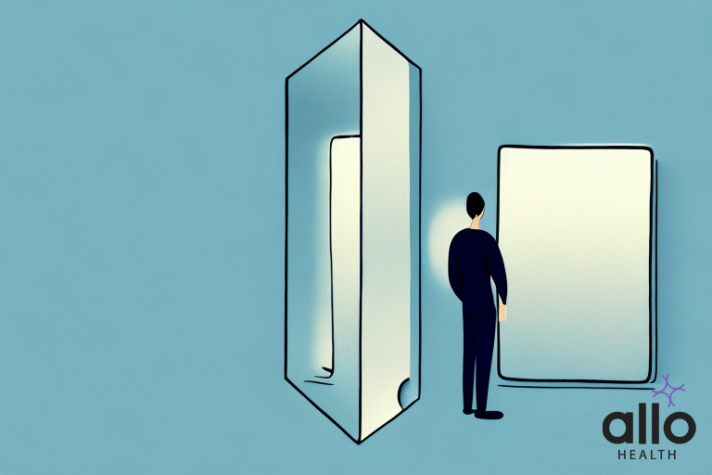What Are The Symptoms And Complications Of Pelvic Inflammatory Disease (PID)?

Allo Health is dedicated to personalized well-being, offering support and trusted information tailored to individual health goals. The platform emphasizes human-generated content, led by a distinguished medical team of experts, including physicians and sexual health specialists. Their commitment to credibility involves rigorous fact-checking, authoritative research, and continuous updates to ensure accurate, up-to-date information. Allo Health's unique approach goes beyond conventional platforms, providing expert-led insights and a continuous commitment to excellence, with user feedback playing a crucial role in shaping the platform's authoritative voice.

Dr Sanina Mansoor holds MBBS degree from Yenepoya university,Mangalore.She has 8 years of experience working as a medical officer at various health centres and medical colleges.
Why This Was Upated?
Our experts continually monitor the health and wellness space, and we update our articles when new information became available.
Updated on 26 February, 2025
- Article was updated as part of our commitment to diversity, equity, and inclusion.

"The following blog article provides general information and insights on various topics. However, it is important to note that the information presented is not intended as professional advice in any specific field or area. The content of this blog is for general educational and informational purposes only.
Book consultation
The content should not be interpreted as endorsement, recommendation, or guarantee of any product, service, or information mentioned. Readers are solely responsible for the decisions and actions they take based on the information provided in this blog. It is essential to exercise individual judgment, critical thinking, and personal responsibility when applying or implementing any information or suggestions discussed in the blog."
Pelvic Inflammatory Disease (PID) primarily affects women, as it involves infections of the female reproductive organs. However, men can experience symptoms related to PID indirectly, particularly if they are sexual partners of women with PID or have concurrent infections. In this comprehensive guide, we will explore the symptoms and complications of Pelvic Inflammatory Disease separately for men and women.
Symptoms of Pelvic Inflammatory Disease (PID) in Women
- Lower Abdominal Pain: Women with PID often experience lower abdominal pain or pelvic pain, which can range from mild discomfort to severe cramping. The pain may be constant or intermittent and can worsen during sexual intercourse or menstruation.
- Abnormal Vaginal Discharge: PID can cause changes in vaginal discharge, including increased volume, unusual colour (yellow or green), and a foul odor. The discharge may be accompanied by itching or irritation in the vaginal area.
- Painful Urination: Some women with PID may experience pain or a burning sensation during urination, known as dysuria. This symptom is more common when the infection spreads to the urethra or bladder.
- Painful Intercourse: PID can lead to dyspareunia, which is pain or discomfort during sexual intercourse. The inflammation and infection in the reproductive organs can make intercourse painful and undesirable.
- Irregular Menstrual Bleeding:

PID may cause changes in menstrual patterns, including irregular or abnormal bleeding between periods (metrorrhagia) or heavier-than-usual menstrual flow. These changes are due to inflammation and disruption of the normal menstrual cycle. - Fever and Chills: In severe cases of PID, women may develop a fever, accompanied by chills or rigors. Fever is the body’s response to infection and inflammation.
- Nausea and Vomiting: Some women with PID may experience gastrointestinal symptoms such as nausea, vomiting, or abdominal bloating. These symptoms can occur due to inflammation affecting the digestive organs.
- Fatigue and Malaise: PID can cause general symptoms of malaise, fatigue, weakness, and a feeling of being unwell. These symptoms may accompany the inflammatory response and the body’s efforts to fight off the infection.
Symptoms of Pelvic Inflammatory Disease (PID) in Men (Indirect Symptoms)
Men do not typically develop PID directly, as the conditionprimarily affects women’s reproductive organs. However, men may experience indirect symptoms related to PID if they are sexual partners of women with PID or if they have concurrent infections.
- Urethritis:

Men may experience symptoms of urethritis, such as painful urination, discharge from the urethra, and discomfort in the genital area. These symptoms can occur if the bacteria causing PID are transmitted to the male partner during sexual intercourse. - Epididymitis: In rare cases, men may develop epididymitis, which is inflammation of the epididymis (the tube that stores and transports sperm). Epididymitis can cause testicular pain, swelling, and discomfort.
- Increased Risk of STIs: Men who have sexual contact with women with untreated PID or concurrent infections are at increased risk of acquiring sexually transmitted infections (STIs) such as Chlamydia or gonorrhea. These STIs can cause urethritis, epididymitis, and other genital symptoms.
- Screening and Treatment: Men who suspect they may have been exposed to PID or STIs should seek medical evaluation and screening. Prompt diagnosis and treatment of STIs can prevent complications and transmission to sexual partners.
Complications of Pelvic Inflammatory Disease (PID) in Women
- Infertility:

One of the most serious complications of PID is infertility, which can result from scarring and damage to the fallopian tubes. The inflammation and infection can lead to blockages or adhesions that prevent the egg from traveling to the uterus and meeting with sperm for fertilization. - Chronic Pelvic Pain: Some women may develop chronic pelvic pain as a result of persistent inflammation, scarring, or nerve damage in the pelvic region. The pain can be constant or intermittent and may significantly impact the quality of life.
- Tubo-Ovarian Abscess: In severe cases of PID, the infection can lead to the formation of abscesses (pus-filled pockets) in the fallopian tubes or ovaries. Tubo-ovarian abscesses require prompt medical attention and may necessitate surgical drainage or intervention.
- Ectopic Pregnancy: PID increases the risk of ectopic pregnancy, a potentially life-threatening condition where the fertilized egg implants outside the uterus, typically in the fallopian tubes. Ectopic pregnancies require immediate medical intervention to prevent rupture and internal bleeding.
In conclusion, Pelvic Inflammatory Disease (PID) primarily affects women, leading to symptoms such as lower abdominal pain, abnormal vaginal discharge, painful urination, painful intercourse, irregular menstrual bleeding, fever, and fatigue. Complications of PID in women include infertility, chronic pelvic pain, tubo-ovarian abscesses, and an increased risk of ectopic pregnancy. Men may experience indirect symptoms related to PID, such as urethritis, epididymitis, and an increased risk of acquiring STIs if they are sexual partners of women with PID or concurrent infections. Early diagnosis, prompt treatment, and preventive measures are essential in managing PID and minimizing its complications in both men and women.








































